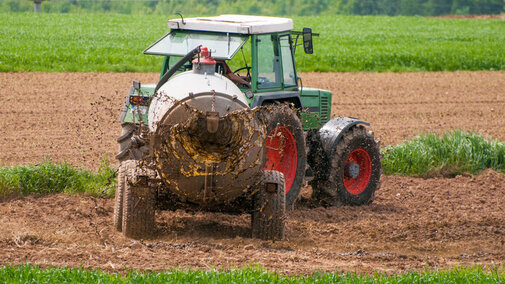Planning for Summer Annual Forages
Recently, I talked about the importance of planning for cool-season annual forages and the same applies for summer annual forages. Taking care of this early could save you some money on seed or ensure that you get what you want.
Your plans should include whether you plan to hay this forage or have it for extra grazing. But which one will you plant?
It can be confusing because there are six different types of major summer annual forage grasses. These include sudangrass, sorghum-sudan hybrids, forage sorghum (which we often call cane or sorgo), foxtail millet, pearl millet and teff. Each one has its own strengths and weaknesses. So, base your choice primarily on how you plan to use it.
For pasture, sudangrass or pearl millet are good choices. Both are leafy, they regrow rapidly, and they contain less danger from prussic acid poisoning than other annual grasses.
For hay or green chop, select sorghum-sudan hybrids or pearl millet because they yield well and they have good feed value when cut two or three times. On sandy soils, or when conditions are dry, foxtail millet may be a better choice for summer hay. It dries fast, doesn't regrow after cutting and handles dry soils well. Cane hay is grown in many areas and produces high tonnage, but it’s lower in feed value and dries more slowly after cutting than the hybrids or millets. Or you could choose teff for a really soft, leafy, high quality horse hay.
If the plan is to chop for silage, choose the forage sorghums, especially hybrids with high grain production. They can't be beat for tonnage or for feed value.
While there are several choices of summer annual forages, simply select the one that is best adapted to the way you plan to use it.
Applying Manure Before Seeding Alfalfa
To counter high fertilizer prices, producers may consider planting a crop with lower fertility needs or utilizing an alternative fertility treatments. One good option is combining both by spreading manure on a field about to be seeded to alfalfa.
Applying manure before seeding alfalfa may seem counterproductive since alfalfa is not likely to benefit from any nitrogen in the manure. But manure also is rich in phosphorus, potassium, sulfur and many micronutrients that alfalfa needs in large quantities.
Research studies show that applying as much as 12,000 gallons or 50 tons of dry manure per acre before planting alfalfa can boost alfalfa yield more than commercial fertilizers at the same nutrient levels. This yield bump is seen on both low and high fertility soils, where sometimes higher fertility soils do not respond to commercial fertilizer. Other factors like improved soil tilth, increased soil microbial activity, micronutrients and early nitrogen availability may be the reason manure increases alfalfa yield so well.
Do not heavily apply manure prior to alfalfa seeding if you also plant a companion crop like oats that you plan to harvest for grain. It is likely to lodge and smother the young alfalfa plants, if not cut early for hay. To limit ruts and deep compaction during manure application, avoid driving on wet field with heavy equipment
Before applying, soil test and a manure test to determine application rates. Mix manure well into the soil using tillage to prepare a firm seedbed, so new alfalfa seedlings will emerge rapidly and vigorously. Plan your weed control program carefully since manure can stimulate weed seedlings. Proper timing of seeding, firm seedbeds and herbicides or clipping can control weed pressure.
Looking to cut fertilizer costs? A heavy dose of manure before planting alfalfa can pay big dividends.

